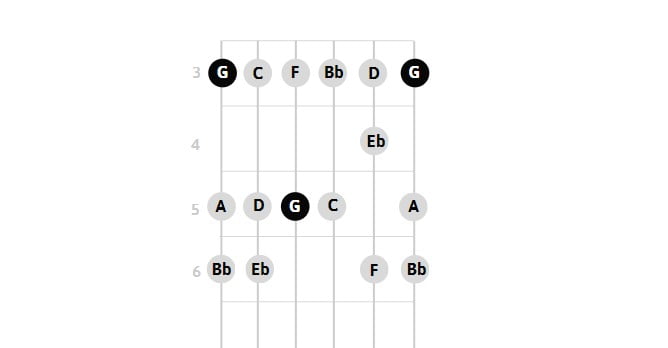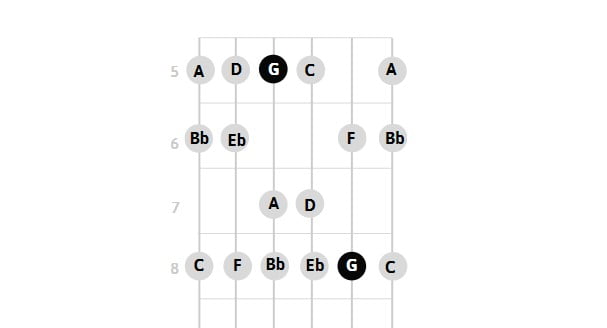Learning major scales on the guitar is crucial, but it’s equally important to learn their minor counterparts. The G minor scale is a great option for guitar players who want to add emotion and tension to their music. There are three types of minor scales – natural, harmonic, and melodic – and G minor is commonly used in many popular songs, just like its major counterpart, G major.
Since the G minor scale conveys a sense of sadness, grief, and angst, it’s a powerful tool for musicians who want to express those feelings in their music. Its versatility also makes it a valuable scale for beginners to master. In this lesson, we’ll explore the G minor scale, including its notes and fingerings in two different positions. Are you ready to learn? Let’s dive in!
Contents
Notes on the G minor scale
The G minor scale consists of seven notes:
- G
- A
- Bb
- C
- D
- Eb
- F
If you’re familiar with the Bb major scale, you may notice that it shares the same notes as the G minor scale, albeit in a different order. This relationship between the two scales is known as relative major and minor, with Bb major being the relative major of G minor.
With this musical theory in mind, let’s explore some fingerings and positions you’ll need to learn to play the G minor scale on the guitar.
G minor scale positions
Using guitar scale diagrams is a straightforward method to learn the G minor scale. These diagrams illustrate the fretboard of your guitar, with each dot representing a specific note on a particular string and fret. If you see a dot with a note above the string, that means you should play the string in an open position. The dark dots on the diagrams indicate the root note of the scale, which is G in this case.
For this lesson, we’ll focus on the natural G minor scale since its patterns are generally easier for beginners to grasp and remember.
3rd position
To play the natural G minor scale in the 3rd position on the guitar, you’ll begin by placing your index finger on the 3rd fret of the low E string. From there, you’ll use your middle finger to play notes on the 4th fret, your ring finger for notes on the 5th fret, and your pinky for notes on the 6th fret. Next, you’ll shift your hand up to use your index finger on the 2nd fret of the G string before returning to the low E string to play the 3rd fret with your index finger again.

5th position
To play the natural G minor scale in the 5th position on the guitar, you’ll start by placing your index finger on the 5th fret. Then, you’ll use your middle finger on the 6th fret, your ring finger on the 7th fret, and your pinky on the 8th fret to play the subsequent notes.

G minor scale Tab
While guitar scale diagrams are an effective way to learn scales, pitch, and structure, they’re not the only method available. Guitar tabs offer a different approach to representing scales, breaking them down into more step-by-step directions. Some new guitarists may find it easier to learn from tabs than from diagrams. However, since both forms of notation are prevalent, it’s beneficial to have a good understanding of both so that you’re not limited as you continue to learn guitar.
In the next section, we’ll take a look at the guitar tabs for each of the pentatonic scales we studied earlier.
3rd position tablature
To play the G minor scale in the 3rd position, begin by placing your index finger on the third fret. Follow the guitar tab, starting from the sixth (low E) string.

5th position tablature
To play the G minor scale in the 5th position, begin by placing your index finger on the 5th fret of your D string, then follow the guitar tab.

G minor scale exercises
Remember to practice your scales frequently to memorize them effectively. Start slowly and focus on cleanly fretting each note with the correct finger placement. As you gain finger strength, you can increase your speed and confidence. Using a metronome while practicing can also help you improve your timing.
Playing the two versions of the G minor scale you’ve learned back to back, along with any additional positions, can help you hear the differences in pitch and tone as you play the same notes in different spots along the fretboard. Scales are an excellent way to improve your picking technique, incorporating skills such as alternate picking to keep things engaging. Make practicing scales a regular part of your learning routine and expand your knowledge to include more scales, chords, and songs with our Guitar tunio.This powerful app is available on the App Store and Play Store, check it out.
